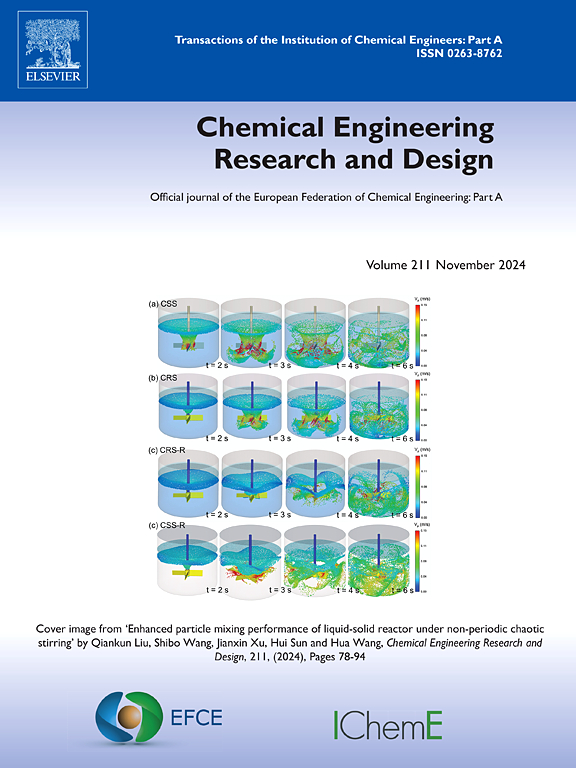Particle mixing and segregation behavior in continuous blenders based on DEM method
IF 3.7
3区 工程技术
Q2 ENGINEERING, CHEMICAL
引用次数: 0
Abstract
As part of the Process Analytical Technology (PAT) initiative, continuous mixing enables more efficient and automated powder blending. However, there remains a limited understanding of the intricate particle behaviors throughout the entire continuous mixing process. In this study, the Discrete Element Method (DEM) is applied to analyze the particle mixing flow and segregation behavior during the mixing process. The particle collision results are used to determine differences in particle motion. The mixture's relative standard deviation (RSD) is used to characterize the mixing effectiveness. Powder velocities and residence quantities are used to characterize the particle motion behavior. The overall hold-up mass and average residence time decrease with increasing impeller speed, while the number of blade passes exhibits the opposite trend. Interestingly, particles do not reach the maximum average central variance at the highest shaft speed. These results indicate that the entire mixing process is also worth attention.
基于DEM方法的连续式搅拌器中颗粒混合与偏析行为
作为过程分析技术(PAT)计划的一部分,连续混合可实现更高效、更自动化的粉末混合。然而,人们对整个连续混合过程中错综复杂的颗粒行为的了解仍然有限。本研究采用离散元素法 (DEM) 分析混合过程中的颗粒混合流和偏析行为。粒子碰撞结果用于确定粒子运动的差异。混合物的相对标准偏差 (RSD) 用于描述混合效果。粉末速度和停留量用于描述颗粒运动行为。总体滞留质量和平均停留时间随着叶轮速度的增加而减少,而叶片通过次数则呈现相反的趋势。有趣的是,颗粒在最高轴速下并没有达到最大平均中心方差。这些结果表明,整个混合过程也值得关注。
本文章由计算机程序翻译,如有差异,请以英文原文为准。
求助全文
约1分钟内获得全文
求助全文
来源期刊

Chemical Engineering Research & Design
工程技术-工程:化工
CiteScore
6.10
自引率
7.70%
发文量
623
审稿时长
42 days
期刊介绍:
ChERD aims to be the principal international journal for publication of high quality, original papers in chemical engineering.
Papers showing how research results can be used in chemical engineering design, and accounts of experimental or theoretical research work bringing new perspectives to established principles, highlighting unsolved problems or indicating directions for future research, are particularly welcome. Contributions that deal with new developments in plant or processes and that can be given quantitative expression are encouraged. The journal is especially interested in papers that extend the boundaries of traditional chemical engineering.
 求助内容:
求助内容: 应助结果提醒方式:
应助结果提醒方式:


